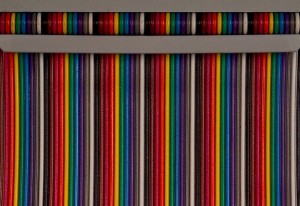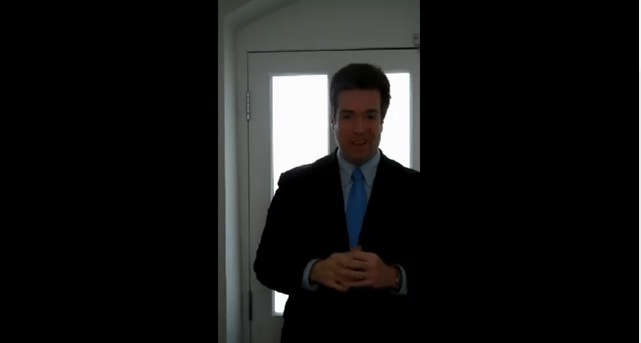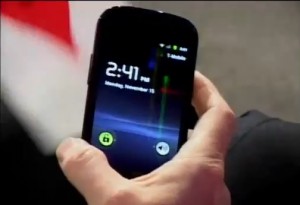9 Futurists Give 2020 Digital World Predictions to Mashable
July 11, 2012

9 Futurists give Mashable's Amy-Mae Elliott predictions for the digital future. Image courtesy of S58y. Used under Creative Commons license, http://creativecommons.org/licenses/by/2.0/deed.en.
We’re always interested in predictions for the future and were excited to be asked by Mashable’s Amy-Mae Elliott for one of our own in her article “9 Bold Predictions for the Digital World of 2020.” Dr. John Vanston chimed in on how voice quality by 2020 will be so excellent that “Younger generations will hear something that theretofore only older generations remember: the sound of a pin dropping.”
A couple of the futurists’ comments in the Mashable article refer to the massive amounts of information that is increasingly available to everyone. According to Dave Evans, Cisco Chief Futurist, “We are amassing unprecedented amounts of data – a zettabyte alone this year. This data is social and public (Facebook, Twitter, YouTube, blogs, etc.). Billions of devices (25-50 billion by 2020) will contribute exponentially to this avalanche of data … By 2015, Cisco Visual Networking Index predicts 1 million video minutes will traverse the Internet every second.”
According to Brian David Johnson, Futurist, Intel, “the size of the meaningful computational power keeps getting smaller and smaller. So, as we approach 2020 the size of the intelligent gets closer to zero in size, nearly invisible.”
Those that can use these massive amounts of information most imaginatively will have a very real advantage in the coming years. A good way to winnow through the information is finding minitrends in your areas of interest within the larger emerging trends. We talk extensively about this on this site and in our MINITRENDS book. Also stay tuned for our formal announcement of MINITRENDS 2012: A Conference on Translating Emerging Trends Into Business Opportunities scheduled October 17-18 at the Omni Downtown in Austin.
We are also intrigued by futurist Mike Walsh comments about virtual avatars: “By 2020 retail virtual avatars – on screens and in holographic projection – will start to become popular.” Perhaps, these virtual avatars will be waiting on us in the not too distant future!
We talk about Virtual Worlds being a minitrends opportunity in MINITRENDS. For the free excerpt from the book, see “Expanding Involvement in Virtual Worlds.”
Cheers,
Carrie
InnoTech Conference Teeming With Emerging Trends
October 25, 2011

Sean Lowry, Exe. Dir., Innotech and Carrie Vanston, Co-Author, MINITRENDS at Innotech Conference, Photo by Sloan Foster
I’ve attended the InnoTech Conference and Expo and its associated eMarketing Summit for several years now and always learn a lot. This year I wanted to pass on some comments from experts that I heard yesterday relating to emerging trends that are becoming more and more important:
Sean Lowry, of the very successful InnoTech series, always does a great job of making sure everything runs smoothly. I was even able to steal him for a minute to ask what emerging trends he saw coming. He told me, “I see continued convergence of all the different technologies we are seeing here today. Development of mobile applications and host applications in the cloud are particularly important. There is so much video activity and a lot of it is being hosted in the cloud now.”
I asked Giovanni Galluci, social media expert and Dallas photographer what he thinks the next trend in social media is going to be. He said, “Getting over it. Everyone is burnt out with all the hype and now people are looking for more meaning in social media. Twitter is ridiculous. Those who do marketing are beginning to realize it. Online social media is becoming part of the umbrella of marketing, which is where it belongs. Social media is becoming more commodatized—as in more of a commodity.”
He gave several great hints about Facebook including that Facebook ads are the best way to grow a fan base; Facebook is the 2nd largest search engine, so take advantage of it (including using pictures with metatags, main key words in description, etc.); and put Facebook info on all your printed matter including cards and bills.
I chatted with William Leake, CEO of Apogee Search Marketing, and his take was that “More and more advertising presence is going to be driven by physical location. If you don’t have a physical location strategy, you are going to lose.”
Craig Wax, CEO of Invodo and a video expert, had a lot to say about the future of video marketing. According to Craig, “In the future, no one is going to stand in line anymore. Offline and online is no longer relevant. This is already starting to happen and it is going to become ubiquous.” He added that “QR readers are going to be incorporated into devices and the present obstacles to their use will be chipped away.” (On a side note, Craig was most recently the Senior Vice President and General Manager at Match.com. That had to be an interesting job!)
According to Pat Scherer, Web and Mobile Deployment Manager at The Detail Person, “Mobile space is going to be huge. With the explosion of devices, I think it’s going to make a huge impact on the retail industry. Not only for payments, but for creating local-based experiences utilizing mobile social media. I anticipate this leveling the playing field with e-commerce.”
Finally, I got to chat briefly with siblings Kevin Olsen and Kerri Olsen, Co-Founders of the Austin Grand Prix. Having Formula 1 in Austin exciting!
Cheers,
Carrie Vanston
Media/Marketing Director, Technology Futures, Inc.
Co-Author, MINITRENDS: How Innovators & Entrepreneurs Discover & Profit From Business & Technology Trends
Technology Trends for Entrepreneurs
December 6, 2010

Android-operated microwave oven, from Touch Revolution video.
Entrepreneurs don’t only create new technology trends, they also use them to take care of businesses. One example is the trend away from using in-house journalists to using freelance journalists to using custom content farms.
An example of an entrepreneur who has successfully mined the Minitrend of content farming is Jonathan Blum. Blum has shifted from a career in broadcast journalism, where he worked for MTV and covered the O.J. Simpson trial for ABC News, among other accomplishments, to a career in custom journalism through his award-winning startup, Blumsday.
Blumsday provides custom content for high-end clients, including CNN and TheStreet. His articles are regularly featured in Entrepreneur magazine. His work earned a Best in Business Award from the Society of American Business Editors and Writers.
One of Blum’s recent creations for Business Insider is a list of the top tech trends for entrepreneurs or, as he puts it,
[…] the top 25 tech tips, trends and megatrends: what’s new now, what will be new tomorrow and what you can expect to grapple with even farther down the road.
I would argue that most of these are “minitrends” rather than “megatrends” — that is, trends that show the likelihood of widespread adoption in the next two to five years and are the byproduct of such megatrends as the spread of the Internet, the growth of mobile devices, or the need for alternative energy sources.
The first minitrend I notice is the increasing use of slideshows instead of text to render the forecasts of pundits. Last week, we reviewed the top 10 tech trends of veteran computer journalist Eric Lundquist, who also presented his picks in slideshow format. We also covered Verizon’s top tech trends, which were presented with video — another Minitrend we expect to see more of in the coming years.
Many of the trends on Blum’s list will already be familiar to readers of this blog. Some of the less typical ones include:
- Touch Kiosks — Blum suggests that using inexpensive touchscreens from companies such as HP and Acer can save a bundle in self-serve customer service.
- Server Simplicity — New products combine “phone servers, e-mail servers, routers, document servers and firewalls into a single low-cost device.”
- Smart Boards for Smarter Presentations — BoxLight and Epson make portable smart boards that take presentations way past the PowerPoint.
- Apps for Your Apps — New apps that run on your household appliances, such as washers and dryers, TVs and microwave ovens. No fooling. Check out the Engadget review.
- Automatic Decision-Making — As computers get smarter, they can do more of our work for us. Entrepreneurs look forward to the day when they can ask the computer to find the 20 best venture capital prospects for a business, then return after a coffee break to find a quality list waiting. Blum points to Google’s Aardvark as an early example of an intelligent assistant.
- Virtual Assistant — Using a bot to represent you at meetings, recording what happens and answering questions by accessing all your computer files, may be more than five years away, but it’s still fun to ponder.
Blum has lots of other tips in his presentation — especially for the eco-conscious entrepreneur interested in energy-saving technologies. I recommend you take his presentation for a ride. It’s a quick trip that really delivers do-it-now ideas for entrepreneurs on the go.
STEVE O’KEEFE
News Editor, Minitrends Blog
Source: “The Future-Proof Entrepreneur: 25 New Tech Trends You Need To Know About,” Business Insider, 11/14/10
Source: Blumsday, undated
Image: Screen capture from Touch Revolution video presentation, used under Fair Use: Reporting.
Trend of the Year: Social Shopping
November 29, 2010
 In case you hadn’t noticed, this Thanksgiving marked the tipping point of a major new technology trend: Social Shopping. When you combine the spread of social networking, the market penetration of mobile phones, the desperation of retailers to capture more business, and consumers’ love of the deal, you wind up with Social Shopping.
In case you hadn’t noticed, this Thanksgiving marked the tipping point of a major new technology trend: Social Shopping. When you combine the spread of social networking, the market penetration of mobile phones, the desperation of retailers to capture more business, and consumers’ love of the deal, you wind up with Social Shopping.
Richard MacManus, the founder and CEO of ReadWriteWeb, which is consistently one of the best blogs covering Internet technology trends, recently kicked off a series looking back on the top tech trends of 2010. He begins the series by looking at Social Shopping.
In 2010, we’ve seen the rise of so-called ‘social shopping’ services. They rely heavily on technologies such as social networking, crowdsourcing and smart phone scanners. Here we present five of the main social shopping developments of 2010.
MacManus doesn’t just pick five companies to profile, but five different types of Social Shopping technologies. Who knew there were so many? Here are his top picks, along with examples of companies that have been using these technologies to attract consumers:
1. Daily Deals: Companies that send one or more “deal of the day” messages to subscribers. Examples: Groupon, LivingSocial.
2. Real-Time Shopping: These deep discounts might last for only a few minutes or hours or until supplies run out. Example: Woot.
3. Location Check-In Services: These services offer rewards to people who check in frequently or on certain days. Examples: Foursquare, Yelp.
4. Facebook Shopping: MacManus credits Facebook with enabling Social Shopping through deals with Amazon.com and other retailers.
5. Barcode Scanning: Phone apps that allow you to take a picture of a barcode or QR code with your phone, then search for reviews, deals, or other information on the Internet. Examples: RedLaser, ScanLife.
Last week, we wrote about how Google CEO Eric Schmidt revealed a new feature for Android phones that will allow you to skip the barcode photo and just wave your phone near an NFC chip to learn about deals on a product.
If those aren’t enough leads for you to explore the new world of Social Shopping, then take a look at Mashable’s list of 18 Sites for Social Shopping — and don’t forget to look in the comments for another 18 or so!
Happy Holidays!
STEVE O’KEEFE
News Editor, Minitrends Blog
Source: “Top Trends of 2010: Social Shopping,” ReadWriteWeb, 11/15/10
Source: “SHOPPING SPREE: 18 Sites for Social Shopping & Deals,” Mashable, 08/08/07
Photo by Jenelle/Thriving Ink, used under its Creative Commons license.
Verizon’s Top Tech Trends for 2011: Really Bad Video
November 23, 2010

CLICK FOR VIDEO: Screen capture from the video, "Verizon Top 10 Business Technology Trends 2011: Video, the New App Darling"
Verizon just released its predictions for the top technology trends of 2011, and it appears that really bad video is on the list for the new year.
The Verizon top trends list was reported by the popular tech site, CIOL, which is short for CyberMedia India Online Ltd. CIOL provides thumbnail descriptions for each of the 10 trends Verizon forecasts. Here’s the shortlist:
- High-IQ Networks Take Center Stage
- Everything as a Service: a ‘Cloudy’ New Mindset
- Seeing Security Through
- Enterprise Apps Go Mobile
- Video, the New App Darling
- Machine to Machine Cacophony Triggers Transformation
- UC&C Becomes More Than a “Buzz Phrase”
- Farewell to IPv4
- Hello to Universal Identity
- Personalization Inspires Innovation
Number five on that list is “Video, the New App Darling.” About this burgeoning trend, Verizon says in a news release announcing the trends:
Video will be among the most engaging business applications to take advantage of higher-capacity wireless networks for face-to face and face-to-machine interaction… [V]ideo will become an essential tool for workers everywhere.
The problem with this prediction is the video used to deliver it. On the Think Forward Blog, Verizon’s business technology blog, Chris Kimm, Verizon’s vice president of intelligent networking, added a post last Wednesday offering a 10-part video series to introduce Verizon’s Top 10 Technology Trends for 2011. The videos, unfortunately, show what we have to look forward to in the coming video onslaught: Very poorly made videos from people who should know better. Click on the graphic at the top of the post to watch Verizon’s video on the video trend, and see if you can spot these Top-10 Amateur Video Mistakes:
- Uses a low-quality webcam instead of a mini-DV cam or other inexpensive, high-quality digital camera.
- Uses only one third of the visual real estate. Two thirds of the screen is black.
- Uses a built-in microphone rather than a lapel mic or boom mic.
- Terrible audio that makes Kimm sound like he’s at the bottom of a Chilean mineshaft and desperately needs a rescue.
- Looks like he’s in a mineshaft. The narrow but long depth of field creates a tunnel-like visual impression.
- Poor quality backdrop. Even a blank wall would have been better. Has about as much charm as a cheap porn video shot in a Motel 6.
- Horrible backlighting. The backlighting increases the contrast and makes it hard to see Kimm’s facial expressions.
- Doesn’t use directional lights. Even a small, desktop lamp directed toward his face would have made the videos much more watchable.
- Doesn’t use a close-up perspective, which is essential for talking-head videos that are most likely being watched on a small screen, such as a Verizon phone.
- No editing. The videos appear to not have been edited at all. How else to explain the opening and closing moments as a super-close-up Kimm turns on, then off, the camera?
Frankly, these videos make Verizon look like one of the lean solopreneur companies we’ve been talking about on the Minitrends blog — the trend of companies that look big but actually have only one employee and no offices. Isn’t Verizon the company with “The Network” behind it?
My new prediction for top tech trends of 2011: Corporate executives getting some training and equipment for making better impromptu videos.
STEVE O’KEEFE
News Editor, Minitrends Blog
Source: “Top technology trends for 2011: Verizon,” CIOL, 11/18/10
Source: “Cloud Strategies, Economy Continue to Underscore Top Technology Trends for 2011,” Verizon press release, 11/16/10
Source: “Verizon Launches 10-Part Video Series on Technology Trends for 2011,” Verizon Business Think Forward Blog, 11/17/10
Screen capture from Verizon Business video is used under Fair Use: Commentary.
Google’s Schmidt: “Bump to Buy” Coming Soon to Mobile Phones
November 18, 2010

Google CEO Eric Schmidt holding a new "device" that includes a "bump to buy" NFC chip at the Web 2.0 Summit.
Google CEO Eric Schmidt is keen on mobile phones. He says that people don’t realize how powerful these devices are, and claims they are “more powerful” than desktop computers.
Schmidt made these remarks on November 15 at O’Reilly’s Web 2.0 Summit in San Francisco, where he was grilled for almost an hour by Tim O’Reilly and John Battelle. Both O’Reilly and Battelle come from the world of publishing. O’Reilly is founder and CEO of O’Reilly Media, a well-known publisher of computer books and conference organizer. Battelle was a co-founder of Wired magazine and currently runs Federated Media, an online advertising firm. A video of their conversation with Eric Schmidt is available through the Web 2.0 Summit website.
Early in the interview, Schmidt pulls out a prototype “device” which looks very much like a mobile phone. He explains how this new device, which will appear on the market in the coming weeks, will use a “near field communication” (NFC) chip that you can wave or bump against something to get information about a product, person, or place.
With current 3G smartphones, you can take pictures with your phone and use those pictures to search the Web for information about a product or place. On another blog I write for, the SixEstate blog, online journalism expert Rachelle Matherne describes how smartphones can snap pictures of quick response barcodes (“QR codes”) and get additional information about an advertiser’s products.
The hang-up is that using QR codes requires adding an app to your phone, then taking a picture of the barcode with your phone’s camera. Near field communication eliminates all that fuss. You just bump the item with your phone and instantly retrieve all kinds of information. You can bump a book and discover other books by the same author, or deals offered by multiple vendors on the same product.
The bump gets even better when you attach it to a digital wallet. The new smartphones will enable consumers to “bump to buy,” according to O’Reilly. In his coverage of the Web 2.0 Summit, InformationWeek editorial director, Fritz Nelson, says that “bump to buy” will take time to spread:
This requires an ecosystem of merchants, payment providers and payment processors, and while this ecosystem is starting to form, it’s still evolving. Schmidt later told a gathering of reporters that broader acceptance is probably a year away.
Schmidt, who usually wears a severe demeanor, was positively giddy about the potential of the next generation of mobile phones. He says they are more personal, more secure, and more powerful than desktop computers, and that “mobile first” is his mantra, meaning that the phone will be the focus of Google’s strategy in the coming years.
How important are Schmidt’s remarks to driving the industry? Of the 25 videos posted from the Web 2.0 Summit as of this writing, Schmidt’s interview has been viewed over 120,000 times. Compare that to Zynga’s Mark Pincus — and most of the other well-known speakers — whose videos have been watched only a few hundred times, and you can see that Google is still the engine of innovation driving the new economy.
STEVE O’KEEFE
News Editor, Minitrends Blog
Source: “Web 2.0 Summit 2010: A Conversation with Eric Schmidt,” OReillyMedia, 11/15/10
Source: “Google CEO Schmidt Says NFC To Extend Android Acceptance,” InformationWeek, 11/15/10
Source: “QR Codes and the New Journalism,” SixEstate Blog, 11/09/10
Photo: Screen capture from “A Conversation with Eric Schmidt,” courtesy OreillyMedia.
Nonprofits Take Social Networking to New Heights
November 12, 2010
 Social networking is a megatrend that has been gaining momentum since bulletin boards first made it possible for people to schmooze online in the 1980s. Out of this megatrend have come numerous Minitrends that investors have profitably mined over the past five years, including social bookmarking, tagging, and location-based networks such as Foursquare.
Social networking is a megatrend that has been gaining momentum since bulletin boards first made it possible for people to schmooze online in the 1980s. Out of this megatrend have come numerous Minitrends that investors have profitably mined over the past five years, including social bookmarking, tagging, and location-based networks such as Foursquare.
Steve Monfort, a writer for NASDAQ.com, recently reported on the growing trend of small businesses hiring more people to handle social media:
A recent American Express survey shows that 40 percent of small businesses are using social networking to promote their offerings, up from 10 percent a year ago.
While small businesses are just warming-up to social networking, nonprofit organizations were among the earliest to embrace the trend. By now, everyone has heard about “text-to-give,” which was used by the American Red Cross to collect $30 million from cellphone users for earthquake relief in Haiti last year. According to nonprofit tech guru Tonia Zampieri, sales and marketing manager for LoyaltyClicks, a division of Smart Online, text-to-give is so 2009.
Smart Online recently conducted a survey into technology trends for nonprofit organizations. The results were reported on NTEN, the Nonprofit Technology Network, just a few days ago. They indicate that over 90% of nonprofits actively use social networking (compared with only 40% of small businesses, according to American Express). The breakdown: 91% use Facebook, 63% use Twitter, 45% use YouTube, and 35% use LinkedIn.
You would think that level of penetration would be cheered by the nonprofit experts at LoyaltyClicks. But Zampieri has found a weakness in charity tech: mobile myopia. She writes:
[O]nly 16% of the surveyed nonprofits plan on having mobile websites in 2011, while 19% plan on having smartphone applications.
Zampieri cites a Nielson study that almost one-quarter of the time people are online is spent using social networks — and that half of that social networking is done with mobile devices. Then she provides “compelling reasons why a mobile website or a mobile application might work better for your organization” than, for example, old-fashioned text-to-give:
- donations aren’t limited to $5 or $10
- donations are received immediately
- you capture and control crucial data about your donors
- any size charity can use this technology, not just giants
- it’s a permanent tool, not just a one-shot appeal
For inspiring examples about the way nonprofit organizations are innovating with social networking, we recommend a recent Mashable story on “5 Must-Follow Non-Profits Making a Difference With Social Media.” The article is a run-up to the annual Mashable Awards which will be held January 6, 2011, at the Consumer Electronics Show (CES) in Las Vegas.
I was particularly impressed by the way the Brooklyn Museum has made use of a wide variety of social networking Minitrends to engage visitors and benefactors both online and in person. The museum has a dedicated mobile site (LoyaltyClicks would approve) that allows browsers to tag the museum’s 94,000 piece collection, making it easier for visitors to locate must-see art based on other patrons’ comments. They also use Foursquare to provide restaurant suggestions and other ideas to fill out a trip to the museum.
If you have any other examples of nonprofits who are making innovative uses of social networking applications, we’d like to hear about them. And so would Mashable! The Mashable Awards are open for nomination until November 29.
STEVE O’KEEFE
News Editor, Minitrends Blog
Source: “Job growth anticipated in cloud computing, apps, social media,” NASDAQ.com News, 10/15/10
Source: “Technology Trends for Nonprofits in 2011,” NTEN, the Nonprofit Technology Network, 11/08/10
Source: “5 Must-Follow Non-Profits Making a Difference With Social Media,” Mashable, 11/06/10
Image courtesy of Lisa Brewster, used under its Creative Commons license.


